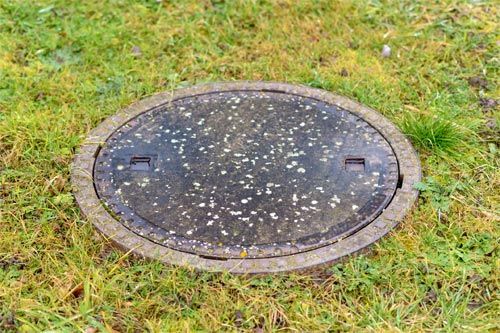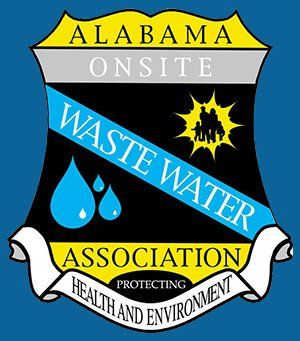ON-SITE SEPTIC SYSTEMS: A SHORT GUIDE FOR NEW HOMEOWNERS
- By Admin
- •
- 08 Aug, 2018
- •
The process of moving into a new-to-you home often includes an adjustment period. When the home has its own on-site septic system, the new owners often have questions or even feel a bit fearful about taking on this new responsibility. This is especially true for buyers who have previously only lived in homes or apartments served by a publicly maintained sewer system.
If you have recently purchased your first home equipped with a septic system or are planning to do so soon, the following information can help you understand how it works and increase your comfort level and confidence as a homeowner.

UNDERSTANDING THE BASIC COMPONENTS AND THEIR ROLE
While septic system contractors can design septic systems in a number of configurations and sizes to accommodate the specific needs of a home, its occupants, and the lay of the land, most will include the following three components:
- A concrete, metal, or poly septic tank to hold and process the wastewater and solids produced inside the home
- A series of pipes, equipped with clean out ports, to carry the waste from the home to the tank and then move the effluent from the septic tank to the drainfield
- A drainfield designed to allow the effluent from the septic tank to seep into the ground surrounding the specially perforated lateral line pipes that extend throughout the drainfield area
At the time of installation, installers size septic systems to accommodate the amount of waste that the home is expected to produce. This is often determined using the number of bedrooms in the home to predict the likely number of occupants. If owners enlarge the home at some point after the original installation or sell the home to a larger family, you might need to use a more frequent pump out schedule or consider updating or replacing the system to handle an increased amount of waste.
UNDERSTANDING THE SIGNS OF DEVELOPING PROBLEMS
In most cases, those new to the ownership responsibility of their own on-site septic system will quickly discover their hesitation evaporating like the memory of the monthly sewer bills at their previous home. This is because most septic systems designed and installed today should last for a quarter-century or longer, with concrete tanks lasting even longer.
Even with such a long lifespan, homeowners will still need to be watchful for developing problems or conditions that can indicate their system is damaged or failing. Some of these include:
- The appearance of unpleasant odors, unexpected moisture, or developing depressions in the soil in the area where the septic tank or drainfield is located
- Gurgling noises, unpleasant odors, or difficulty when flushing toilets inside the home
- Issues with clogged or slow-running drains or experiencing raw sewage seeping into the home from the drains
Homeowners who are unfamiliar with maintaining a septic system should be aware that any activities that compress the ground over the septic system and the encroachment of roots from nearby trees and bushes could cause damage and greatly impact the lifespan of their home's septic tank and drainfield.
UNDERSTANDING THE IMPORTANCE OF REGULAR MAINTENANCE
Septic system maintenance begins with taking steps to ensure that the system does not become overloaded. Septic system experts agree that having the tank pumped out on a regular schedule is one of the best ways to ensure that an on-site home septic system will continue to be effective and trouble-free throughout its lifespan. If possible, homebuyers should always seek information from the previous owner about the septic system maintenance routine, as well as to make sure of a comprehensive septic inspection as part of their home purchase process.
Your local experts at Allen Turner Septic Tank Service can answer any questions you may have about on-site home septic systems and how to maintain them properly. In addition, we can help you set up a customized pumping schedule and provide 24-hour emergency service, should a problem arise after hours.
Septic tanks are important for the treatment of wastewater treatment. Read this blog on the various aspects of septic tank replacement.
When you grow up in a house, you typically won't have a manual of what to flush down the toilet. Discover common family flushing traditions to avoid.
Septic systems provide an effective solution for wastewater. Read this blog about some considerations to think through before installing a septic system.
What shouldn't go into your septic system? Read this blog to learn what products should not enter your septic system through toilets or drains.
Many appliances in your home are the source of items that can damage your septic system. Discover some of those problematic appliances.
Washing laundry can affect your septic system’s operation. Consider the laundry tips from this blog post to protect your septic tank.
A septic system consists of components located underground that use natural techniques to treat wastewater. See the main types of septic systems for homes.
Septic tanks require proper care and maintenance to function correctly, and this can be complex if you have pets. See septic tank care tips for pet owners.
Maintenance costs for septic tanks can add up, but you do not have to spend a fortune. Learn how proper care can save you money on septic services.
For the best septic tank services, careful considerations are necessary. Discover a few qualities to look for in the septic tank company you hire.

